The colorful Dahlia, native to Mexico and Central America, is popular worldwide. Whether in garden beds or as cut flowers, they shine with diverse shapes, sizes, and colors. Dahlias Key Steps for cultivation include planting, watering, and maintenance. Suitable for container growing, they’re accessible to all gardeners.

Even for novice gardeners, growing dahlias in containers is not difficult. However, there are certain special maintenance requirements to make sure you get the outcomes you desire—a profusion of lovely blooms.
As an overview in growing Dahlias in pots, you must select the right variety for your location and the right pot and pot size. You must also use proper and efficient fertilizers to ensure your plant will grow without blemishes. And of course, like any other flowering plants, proper watering, pinching, and deadheading should be done to ensure your plant grows healthy and thriving.
If you plan to grow dahlias in containers, then we have the perfect tips for you! In this article, we will help you through the dahlia-potting process and provide you with blooms all season.
Dahlia General Overview
There are a staggering number of dahlia variations, almost all of which are quite stunning. They come in a variety of sizes, from tiny to the enormous, and aptly termed “dinner plate” kinds. The color and form of dahlia blooms range from straightforward to practically surreal, from tiny pompons with closely geometric flowers to cactus types with flower petals that resemble long, spidery tentacles.
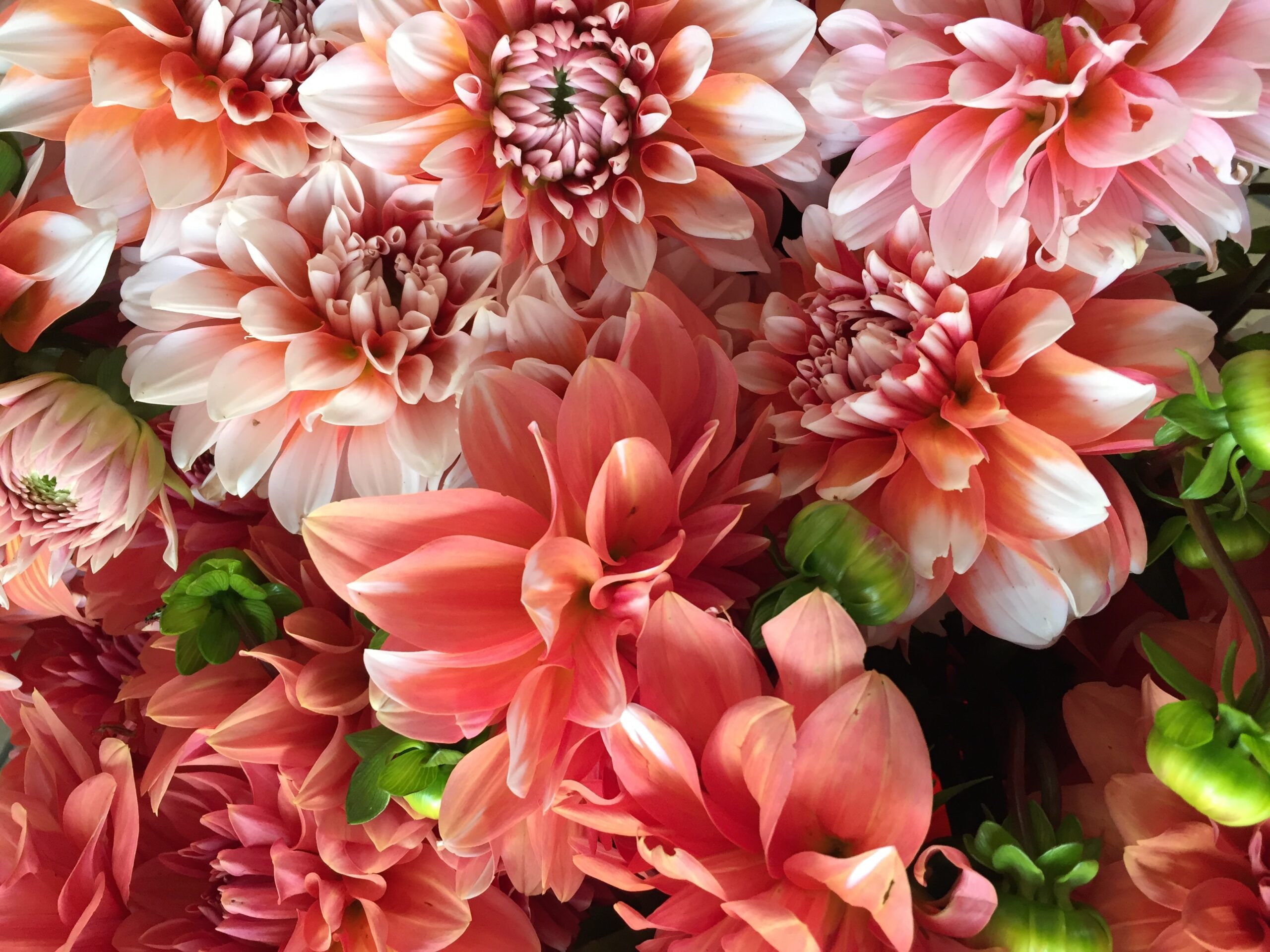
Dahlias produce opulent cut flowers and are typically planted in the ground as perennials. But they can also serve as a thriller or filler plant in a mixed planter, depending on the size of the cultivar.
In most regions, dahlias blooming occur from mid-summer through the fall, so you should anticipate that your container plants won’t have any color until bloom time. However, the leaf can offer a great architectural framework in a mixed planting in a large pot.
Can Dahlias Grow In Pots?

Dahlias thrive in containers or pots, but you must be very careful not to allow them to dry out constantly. They also need to be fertilized frequently during the growing season, and many of them need to be staked to prevent them from toppling over. Additionally, it’s a good idea to plant the taller types in hefty pots to prevent them from toppling over in strong winds.
Dahlia tubers are available for purchase online, at nurseries, and in select big-box stores. Many nurseries also sell dahlias that are already started in containers. Dahlias come in a wide range of plant and bloom sizes. The “dinner plate” dahlia is the flower to seek for if you want huge blooms. Look for miniatures or the low-growing varieties if you want shorter plants.
How To Plant Dahlias In Pots?
Dahlias can be planted indoors about six weeks before the last frost if you live in a colder climate and want them to bloom sooner. However, if you do decide to plant them indoors, it’s a good idea to provide extra illumination once the plant pokes its head over the soil’s surface. You can use either special “grow lights” or shop lights with one cool and one warm fluorescent bulb installed.
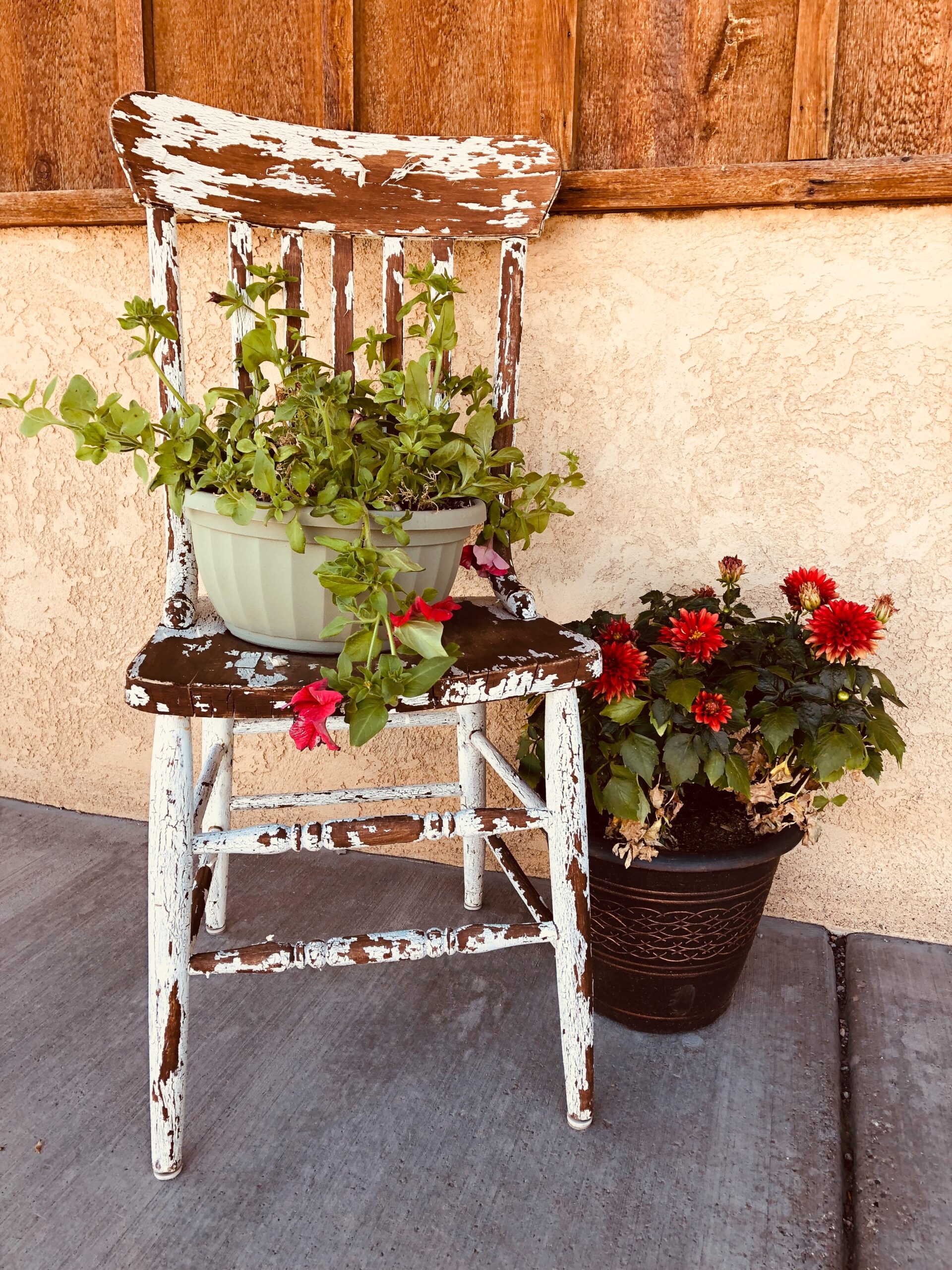
Instructions to follow:
Wait until there is no longer any threat of frost before planting dahlias in pots outside, or make sure you can relocate the pot indoors if frost is expected.
The majority of dahlias require a very large pot, yet it is not necessary for the container to be very deep. Many types would thrive in a pot with a 12- to 14-inch diameter and at least a 12-inch depth. Additionally, check that the pot has sufficient drainage since if the tubers are allowed to sit in water, they may rot.
Pick a high-quality, all-purpose potting mix that drains quickly, then add a slow-release fertilizer while paying attention to the dosage recommendations on the label. Dahlia tubers can be a bit awkward and huge, so you’ll need to be cautious when planting them in containers unless you plan to separate them.
Make sure the plant’s top is pointing upward and that the potting mix completely surrounds the Dahlia tuber without leaving any air spaces (look for eyes, like you would find on a potato or where the stem used to come out of the bunch).
To balance the tuber, pile up a few inches of potting soil at the bottom of the pot to resemble a little hill. The tuber should then be carefully surrounded by more potting soil, which should be firmed around it gently to prevent shattering. As the plant grows, some individuals advise stacking the soil and gradually filling the pot.
The Top Tips For Growing Dahlias In Pots
1. Select the right variety for you.
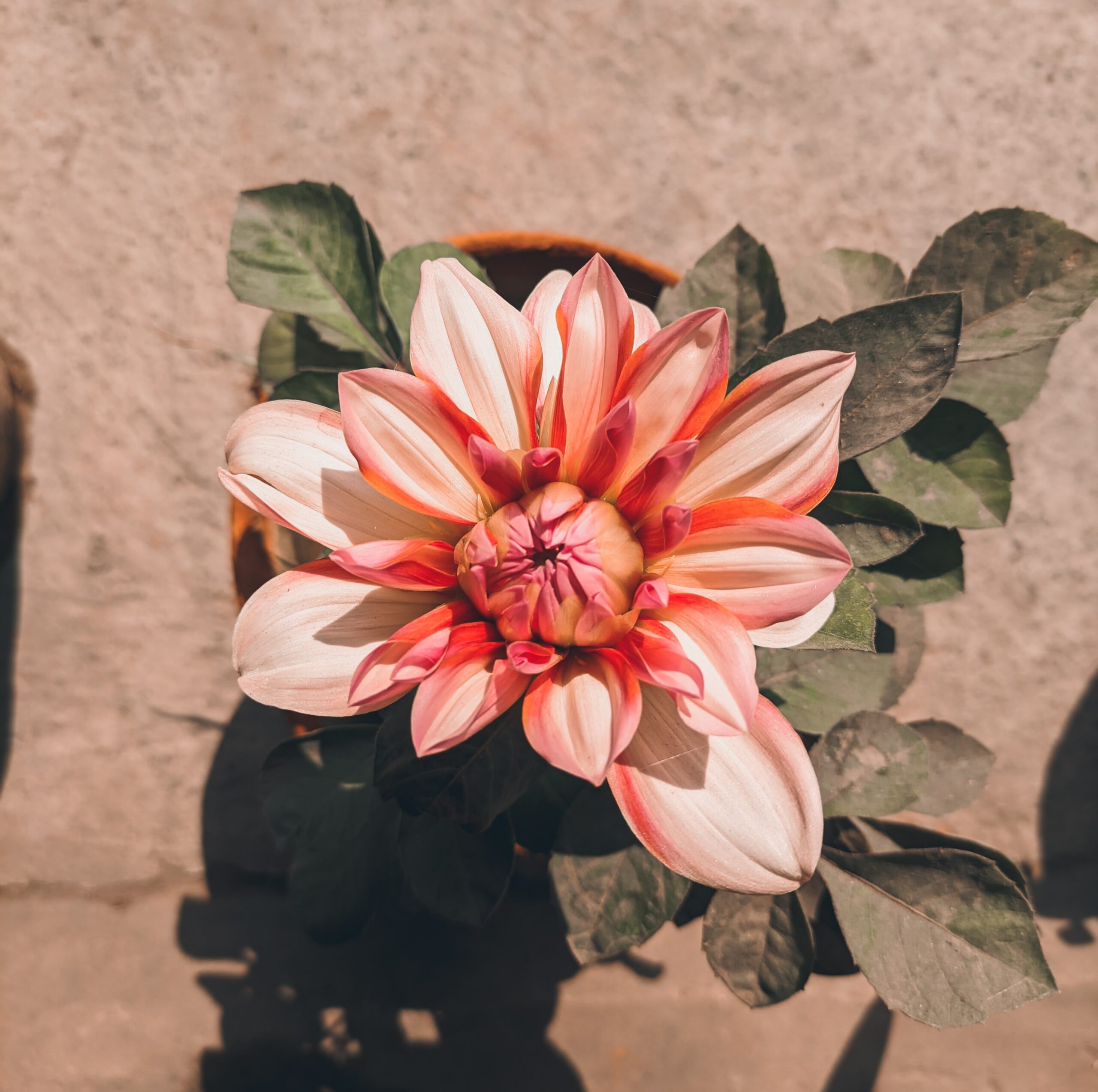
One size does not fit all when it comes to dahlias. Some blooms resemble little pom-poms, while others are so enormous that they are appropriately called “dinnerplate” dahlias. Dahlias are typically divided into large, medium, and tiny kinds to make the distinctions easier.
Large dahlias are often grown in the back of garden beds and reach an average height of four feet. Dahlias classified as a medium are around half that size and grow to a height of one to two feet. Last but not least, little dahlias are bushy plants that reach a maximum height of about 20 inches.
It can be more challenging to choose the proper plant for your needs (and wants) than it is to maintain it. But this issue is taken care of for you if you grow in containers.
Large Dahlias can thrive in pots if you have a large enough pot, but because of their size and structure, they are not useful container plants. Therefore, it is ideal to select a medium or small variety of Dahlia that has adequate area to grow comfortably in a pot for good container-grown dahlias.
If you’re still having trouble deciding, consider one of these little, container-friendly varieties:
- ‘Happy Single Romeo’
- ‘Jan van Schaffelaar’
- ‘Park Princess
- ‘Impression Festivo’
- ‘Pulp Fiction
2. Select the Right Pot and Pot Size
Once you’ve decided on your dahlia variety, finding an appropriate pot is necessary. Dahlias emerge from buds that are created on tubers, so when you plant dahlia tubers, they must fit snugly in the pot. Depending on the size of the tubers, pick a pot with a wide diameter of 8 to 12 inches.
RELATED: 20+ Amazing Types Of Lilies (Lilium) For The Long Blooming Season
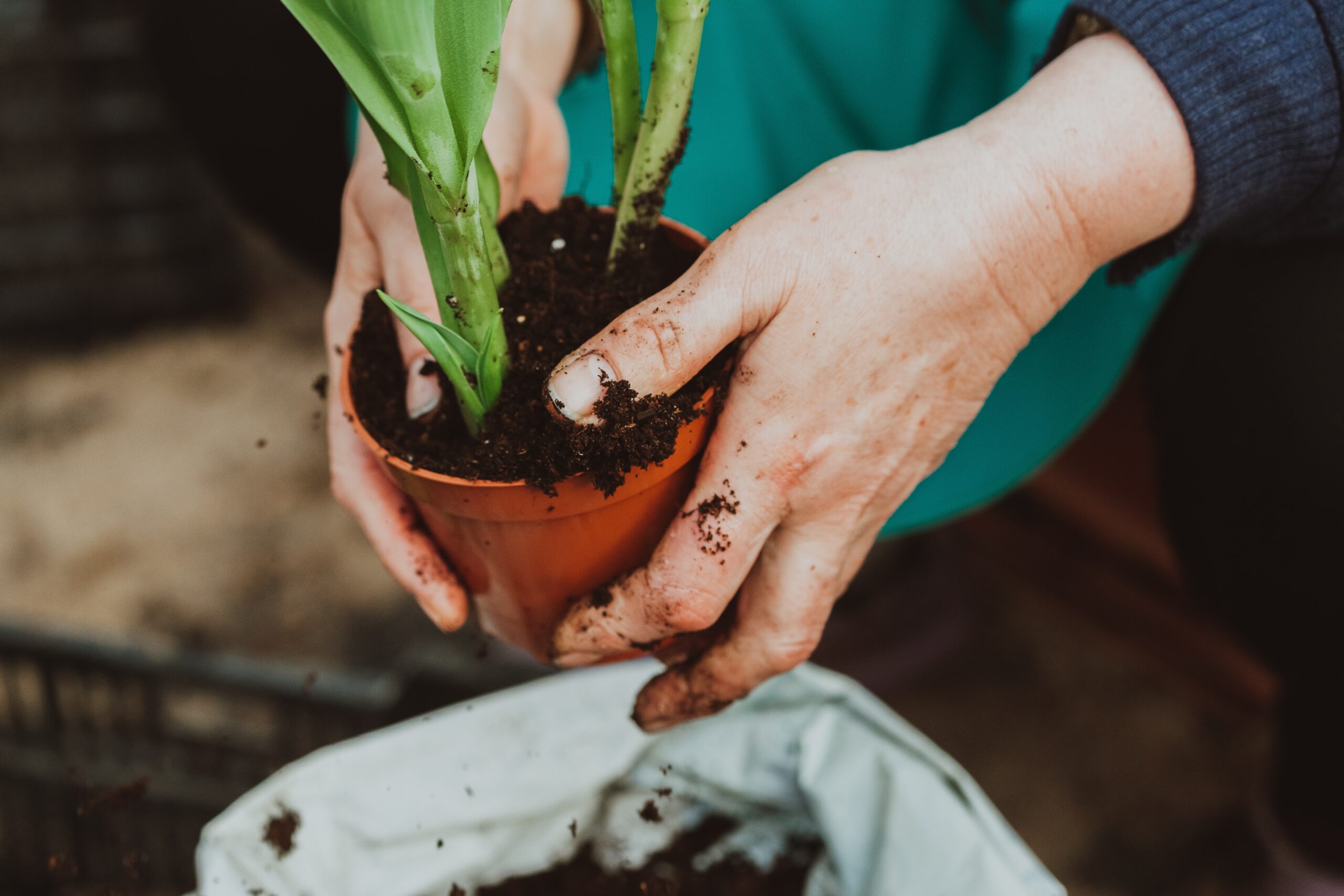
To prevent the plant from appearing too little or too huge for the container when fully grown, try to match the depth of the pot to the potential height of the plant.
Additionally, the container needs to have ample drainage. The tubers are vulnerable to rotting in the early stages of growth if the soil is left damp. Drill a few more drainage holes if your container doesn’t have enough (or worse, none), and use a well-draining potting soil to avoid rot.
Thoroughly clean your container before you start planting. It is advisable to clean and rinse your container with soap and water, regardless of whether you purchased it brand-new from the shop or are using an old container from the garden. A newly potted plant can contract a disease from a dirty pot and become ill before it has a chance to develop.
3. Plant Indoors First

Potted up Dahlias have the tremendous advantage of allowing eager gardeners to start their plants early indoors.
Frost is harmful to dahlia plants, especially to newly planted tubers. Gardeners in frigid climes wait to put their tubers in outdoor beds until all chance of frost has totally passed. However, if you begin your planting indoors, you can shield your plants from frost and have flowering plants much sooner than other gardeners.
Following these steps, start potting three to four weeks prior to the latest date of frost:
- With potting soil that drains well and has been watered, fill the bottom third of the pot.
- Place the tuber horizontally on top of the dirt, with the eye—where the plant will sprout—facing upward. The eye should ideally be in the middle of the tuber, but if it is on either end, make sure it is about an inch away from the pot’s sides. If necessary, you might use a larger pot to center the eye.
- Add a thin layer of soil over the tuber and spray it until the soil is wet. Don’t overfill the pot since the extra soil can retain water, which will make the tuber rot.
- Continue to gradually fill the pot with soil around the stalk as the plant starts to sprout. This enables the plant to develop extensive roots and embed itself in the ground. The stems will break off if the tuber is planted too closely to the pot’s rim due to wind pressure or the plant’s own weight.
- Till the danger of frost has passed, keep the plants in front of grow lights or in direct sunlight. After that, the containers can be placed outside in a warm, sunny location.
4. Water carefully

Dahlia plants in full bloom prefer their soil moist. Unfortunately, novice gardeners unfamiliar with dahlias can interpret it to indicate the plant prefers consistently moist soil throughout the year, which might lead to the death of your prized plants before they even have a chance to sprout a leaf. This is because if the soil is left too wet for too long, the plant’s food source—the tuber—will decay.
Dahlias shouldn’t be watered excessively during their initial stages of growth. In fact, you can wait until the soil is totally dry before watering it again. Then, you can start watering often once the plants are established, and the container is full with potting soil.
5. Stalk your plant as needed

The majority of the compact dahlia types don’t need to be staked. However, you’ll need to think about staking to encourage growth if you select one of the medium or large dahlia kinds. This keeps any stems from snapping in the event of heavy gusts and helps the plant grow straight without toppling over (with some tall varieties, even a mild breeze can topple the stalks).
To prevent subsequent root disturbance, it is recommended to insert the stakes in the container before the plant starts to grow. Drill two to four holes in the sidewalls of the pot near the rim to anchor the stake while you are drilling additional drainage holes in your containers.
Right next to the tuber in the middle of the pot, place a pole the size of the plant’s maximum height. Connect wire or string to the side holes to keep the stake in place.
To keep your dahlias upright as the stalk or stalks become taller, tie them to the stake with gardening wire or rope.
6. Use proper fertilizer

Dahlias are reputed to be heavy feeders or require no fertilizer. However, there is agreement on the timing and type of fertilizer to apply to dahlias.
Dahlias receive all the nutrients they require from the tuber when they first begin to grow. The tuber is intended to serve as a food storage organ. Because the plant won’t yet be able to absorb nutrients from the soil, fertilizing at the potting stage is useless. Instead, choose healthy, plump tubers that are free of flaws to offer your dahlias the greatest start.
7. Pinch your Dahlia as necessary

Although it’s not necessary, pinching your dahlia plant at the correct moment will make it bushier, stronger, and—best of all—produce more flowers. And more flowers are always the aim when it comes to dahlias.
Find the highest sprout in the center of the plant when it has four sets of leaves. Using scissors, cut out the sprout being careful not to harm any neighboring stalks or leaves. The plant will be encouraged to grow more lateral stems as a result. You can pinch the tips of new stems once more to develop extra lateral branches if you want the plant to spread out farther.
You could wish to skip the pinching stage if you need blossoms quickly. The plant will temporarily stop producing flowers while it refocuses its energy on growing new stems. By delaying blossoming by one or two weeks, you will produce more blooms.
8. Deadhead your Dahlia flowers
In any flower garden, deadheading—the act of removing wasted blossoms from the plant—is crucial.

Deadheading is the best practice if you want your dahlia plant to produce the most flowers. You can keep the plant neat by removing the flowers that are past their prime so that it may focus all of its energy on producing new blossoms rather than trying to keep the old ones alive.
Simply cut off any spent flower heads from your dahlias using scissors or your fingers, being careful not to harm any neighboring stems or flowers. If you want to encourage the development of new stems and flowers, you can also trim the stems back to the main branch.
How Do You Care And Maintain Dahlias?
Although they prefer full sun, dahlias do not like it to be extremely hot. Therefore, move your pot into a shady position during the heat of the day if you live in a warm area or it is in a hot spot (in a corner or on concrete where the surface gets heated).
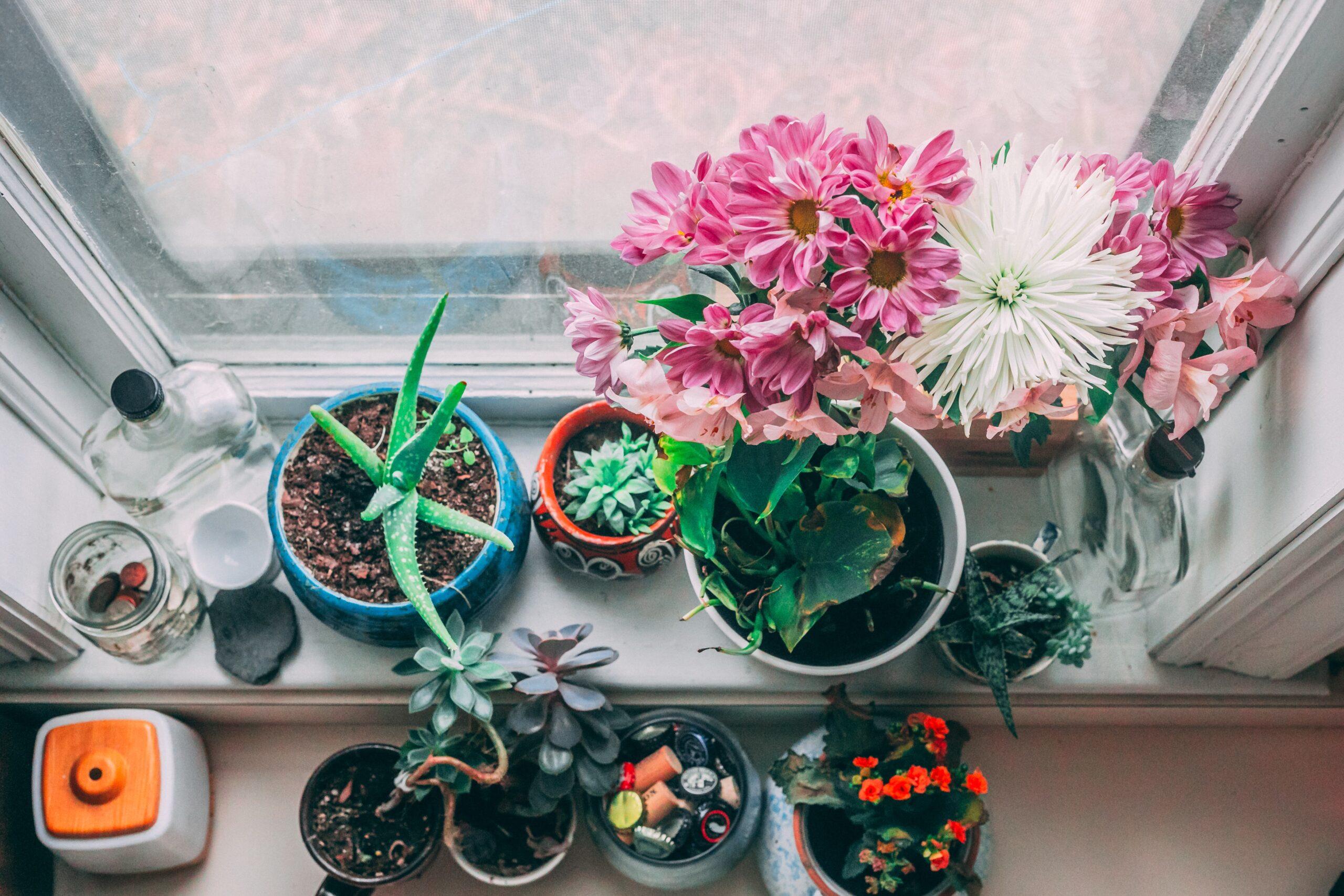
Maintain a moist but not soggy soil. Most dahlias need to be staked to prevent them from toppling over. Additionally, based on the depth of your pot, a single stake might not be sufficient to support the plant. Especially in a strong breeze. Bamboo can be used to construct a teepee, or for a bushier, fuller plant, pinch back the plant’s growth. Deadhead frequently for extra flowers as well.
How Do You Overwinter Dahlias?
Overwintering Dahlias is necessary, especially if you live in a cold area. Hold off till after a few touches of frost. After that, trim away the dead leaves from the pot’s soil by a few inches. Then let it dry in your garage or shed.
At this time, carefully remove all the excess dirt before digging out the tubers. Put them in a cardboard box and keep them somewhere cold and dry, like a well-ventilated open basement. The tubers should be carefully inspected in the spring. And only those that are solid and not dehydrated or soft should be replanted.
Can You Buy Dahlias That Are Already In Pots?
Dahlias in pots are frequently sold at reputable nurseries. The dinner plate type, in particular, may benefit from this. Since they will (hopefully) have been pruned
to produce the nicest and largest flowers.
Final Thoughts
Dahlias in containers may cause some gardeners to hesitate. However, it’s not as difficult as it might seem once you grasp the subtleties. If you follow these eight instructions, you’ll have healthy dahlia plants in as many pots as you like. With plenty of blooms to make you happy all season.
To know more about growing Dahlias at home, please watch the video right below:
We hope you learned something from this article, here are other articles that you can learn from:
31 Fantastic Straw Flowers (Including Photos)
14 Stunning Crystal Flowers (Including Pictures)
35 Delightful Flowers That Start With D (Including Pictures)







